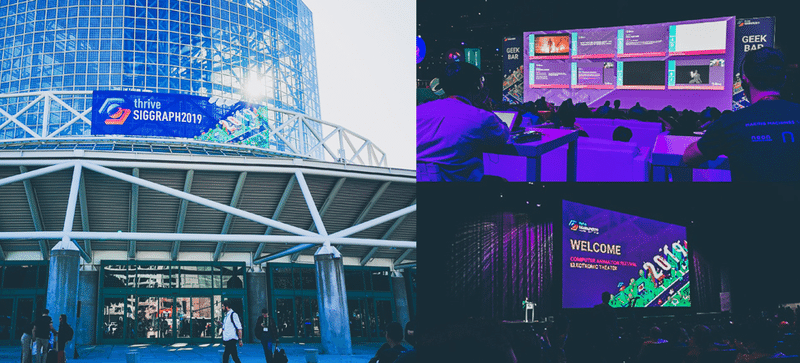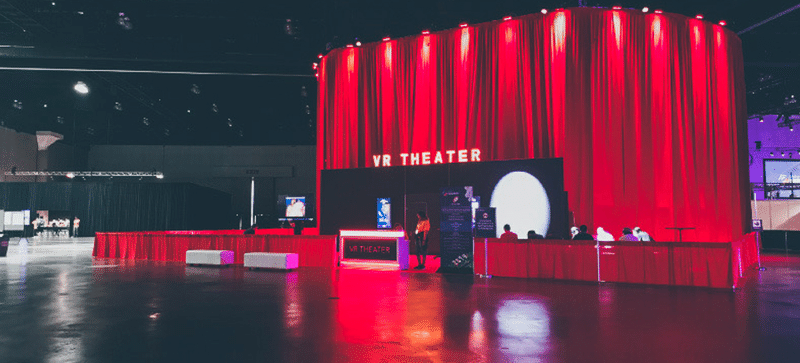
A look at 2019’s Siggraph
本記事は2019年8月3日に投稿されたものです
As a CG Creator, this year’s Siggraph, held in Los Angeles, is the third I have consecutively attended.
Each year, the leap in innovation and technology development presented at Siggraph is noticeable and inspiring and this year was no exception.
For those who are unfamiliar, Siggraph is an annual conference on computer graphics that is held in North America and a little more recently, a supplementary conference, Siggraph Asia, is held in countries throughout Asia. This year, being the 46th annual Siggraph, enjoyed its highest attendance since 2013 of 18,700 people.

The past few years, there has been an increasing focus on virtual reality, augmented reality and immersive content. The technologies and experiences showcased at Siggraph reflected this recent shift with many interesting developments and updates to software and hardware released. The VR Theater showcases short narrative experiences viewed through a VR headset, namely the Oculus Quest, an update from last year’s use of the Oculus Rift headset. The viewing experience was noticeably better and was accompanied by a good set of noise cancelling headphones. This year’s lineup featured an interactive story from BBC, ‘Doctor Who: The Runaway’, A comedy featuring Kaiju (giant monsters), ‘Kaiju Confidential’, ‘Bonfire’ an interactive space themed story, ‘a kite’s tale’ an playful animated short presented by Disney and ‘2nd Step’ a breathtaking VR journey through space.

One particularly popular program is the Production Sessions in which leaders in the industry, mostly high-budget movie, TV show and game production, reveal the cutting-edge techniques, pipelines and passion that’s behind production. The sessions this time around included the making of ‘Avengers: Endgame’, ‘Toy Story 4’, ‘Game of Thrones’, ‘Spider-Man: Into the Spider-Verse’ to name a few that I was able to see.
Another program of personal interest is the Emerging Technologies program which features a variety of technological prototypes, novel techniques to solving problems and technologies that are yet to be marketed.
Other trending developments included implementation of machine-learning, improvements in motion-capture technology, 3D printer and fabrication, wearable devices, newly improved display tech and advancements in gaming. Research papers are also submitted in a program called Technical Papers. Many of the papers have complementary videos; they can be previewed in this exciting official compilation:
I’ll be highlighting some of the technologies and findings that I found interesting during my visit.
GauGAN – AI painting program
One of the biggest highlights of the conference was the GauGAN application developed by Nvidia. They took home two major awards, the ‘Best of Show’ and ‘Audience Choice Awards.
GauGAN converts segmentation maps, drawn with basic brush input much like a paint application, into photorealistic landscape images. It uses a generative adversarial network (GAN) that is trained on over one million real landscape images. This technology is impressive to say the least, and I can only imagine that such technology will have many applications in the close future. A good example is concept art in which artists require fast iterations of designs. The source code has been made available for non-commercial use. I highly recommend having a go at the demo which is also available (links below).
Source Code: https://github.com/NVlabs/SPADE
Demo: http://nvidia-research-mingyuliu.com/gaugan
Magic Leap
I have always been skeptical about Magic Leap ever since their misleading promotional video back in 2015, and their presentation of a digital (pre-rendered) character Mica, which considering the company’s primary focus being real-time graphics, was a little disappointing. This year Magic Leap offered two interactive experiences, one, a preview of a relaxing underwater experience and another featuring interaction with Mica. This time around, the character moved in real-time and was of decent quality but understandably less than the pre-rendered rendition. The experiences itself show a lot of potential, but the headset still has a low field of view which ruins the immersion. Nevertheless, I still look forward to what Magic Leap has to offer next.
Reallusion – iClone & Character Creator
The Reallusion booth showcased an update to its real-time animation software iClone and its Character Creator among other revisions and added features. The Character Creator allows easy creation, customization and animation of real-time characters. Generated characters assets can be exported to most game engines including Unity and 3D tools such as Maya or Blender. What I found particularly interesting was the integration of an ‘AI-based 3D face generator from a single photo’ called Headshot. In a demonstration, I was shown the capability of this new feature and some generated 3d face models and the results were convincingly close to the inputted photo. The projection of the texture was clean, and the calculation took merely a minute. This feels like a handy tool to use in production and I’d like to use the new functions once the new version is released in Q4 this year.
Other solutions presented at Siggraph included Unreal Live Link, a plug-in that connects iClone to Unreal, enabling the user to transfer characters, lights, camera and animation directly.
A more realistic ‘Digital Human’ shader for iClone and the Character Creator was also on display, that boasted more compatibility between game engines.
Reallusion iClone website: https://www.reallusion.com/iclone/
Substance Alchemist – 3D Material Manager Software
Allegorithmic announced the release of a trial of its new material management software Alchemist. Alchemist features a range of creation methods including the use of generative AI.
As a regular Substance user (this always comes out wrong), I’ll be sure to check this out soon for myself.
Website: https://www.substance3d.com/products/substance-alchemist
Among other updates, Substance Painter now supports multi-channel painting across UV tiles and a new automated UV creation tool, anorigami, was announced.
Project Anorigami: https://www.youtube.com/watch?v=aVlfgl32eOk
As always, Siggraph didn’t disappoint and I’m looking forward to what new innovative tech comes out next and, a side of buffalo chicken cheese fries that you’d only find in America.

